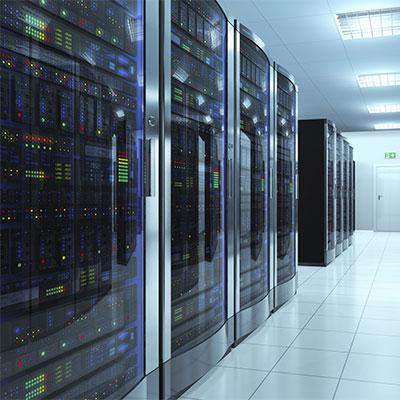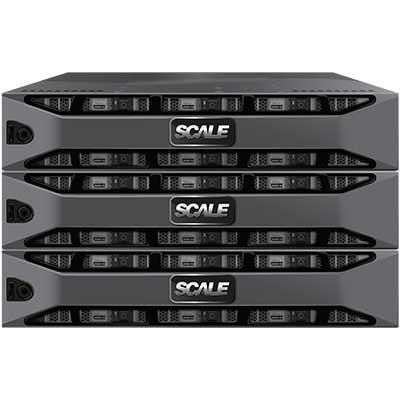Scale Computing CEO On 'Catastrophic' Spectre And Meltdown Performance Impact, Google Cloud Partnership, And Winning Over HPE-SimpliVity Partners

Ready Is Ready For Channel Acceleration
Jeff Ready, founder and CEO of hyper-converged infrastructure pioneer Scale Computing, is "extremely bullish" about 2018 as the company doubles its channel base in preparation for an explosion in hyper-converged sales aimed at displacing "legacy" vendors.
"We've seen a big acceleration in our channel program – over 100 percent growth in terms of the number of partners over the last 12 months. A portion of that is attributed to consolidation in the market," said Ready in an interview with CRN.
Ready also talks to CRN about his Internet of Things and edge computing strategy, as well as the market impact of the "catastrophic" Spectre and Meltdown security issues. "If you're running a system at a fairly high threshold CPU utilization, when you apply these patches – bad things could happen," he said.

How much of an impact is Spectre and Meltdown having in the data center and for Scale Computing?
It's a global catastrophe of sorts. I feel particularly bad for not just our customers, but for any IT administrator. When you think about the impact of something like this -- CPUs that go as far back as the mid-1990s being affected – there are customers out there still running legacy OSes that are not going to get patched. With this kind of giant security hole, they're going to be forced to do an upgrade on a system they hadn't planned to do.
Everybody knows there's going to be a performance hit because you're having to work around a hardware bug with software. So every hardware has to be checked by software. We are positioned pretty well.

How will Spectre and Meltdown impact performance?
What people don't yet know, and won't know for some time, is what is the full extent of that performance hit. As it relates to hyper-converged infrastructure and software-defined storage, that becomes an even bigger question because you're effectively using a traditional SAN with its own hardware and relying on the CPU to do some of that lifting, that then hits the CPU harder. So if there's an 'X'-percent impact on fixing the patch and you're hitting that thing over and over again, you can imagine that you would run into a big issue. Fortunately, as it relates to Scale, one of the benefits we have is that our architecture is intentionally made minimal. ... If you dig into the depths of where the performance hit comes from, it's when you make a system call in the Linux kernel. So the more system calls you make, the more of a performance hit you're going to see. Our architecture intentionally does not make much or any usage of system calls.

So how bad could things get for businesses?
For systems and architectures that make extensive use of system calls, it can be somewhat catastrophic. Our typical customer system is not bound by CPU utilization. The average Scale customer is going to have quite a bit of free CPU cycles available, so [there's a] minimal performance impact for us. For any systems out there, not just hyper-converged, if you're running a system at a fairly high threshold CPU utilization, when you apply these patches – bad things could happen. We've all used a system where the system CPU is maxed out, which is just as bad as when you fill up your hard drive. That's going to cause problems, and really weird stuff could happen.

Are there opportunities for partners related to Meltdown and Spectre?
There's an opportunity in the channel there to say, 'Look, we architected your system to have some overhead, some room to grow. Now your stuff is running, but it's using more CPUs, so we can accelerate the buying cycle for that next node.' On one hand, there's a sales opportunity for the channel to help customers mitigate this and continue to have their properly architected system, but for customers or partners who might have backed themselves into a corner by having a highly loaded system -- they're going to have some trouble and need to find a way to address it -- to the point where applying patches might grind things to a complete halt. They'll need to work with their partners or vendors to have enough CPU room to basically apply the patches.

With acquisitions like HPE-SimpliVity and Cisco-SpringPath, what's your view on the hyper-converged market in 2018?
As it relates to the channel, any time there's a major acquisition like [HPE-SimpliVity], that always creates opportunity for vendors like us in the channel. Because perhaps you were a SimpliVity partner -- they get acquired by HPE and maybe post-acquisition you're finding development isn't what it used to be. These are things that happen with acquisitions like this. We have found throughout 2017 that consolidation reduces the number of HCI vendors and provides some clarity for partners into the vendors they like to work with. We've seen a big acceleration in our channel program – over 100 percent growth in terms of the number of partners over the last 12 months. A portion of that is attributed to consolidation in the market.

What is spurring this channel growth? Is it coming from solution providers jumping ship from larger vendors?
Certainly HPE-SimpliVity was a notable event. Within the last five quarters … there was a notable change in demand for hyper-converged systems. There was a healthy dose of skepticism from the channel in 2012, 2013 and 2014. The tide has now shifted. For a lot of customers, probably more than half, when they're looking to update their infrastructure it's an HCI-first mentality.
If you look at the offering of an HPE, for example, they have their traditional servers and SANs, they've got the SimpliVity solution, they have a whole variety of things. … It's difficult for a partner to be a technical visionary for their customer when they say, 'Hey I have a vision for the future and you can pick one of these seven visions.' It's weird. We want our partners to make a definitive statement to customers that, 'This is where you should go.'

Do you expect to continue to grow your partner base at the same rate in 2018?
I'm not trying to blanket or overlap the world with 10,000 partners. It's very difficult for channel partners themselves to provide a value-add when you can find a VMware channel partner, for example, where you can probably hit a golf ball and hit 18 other channel partners that are also VMware partners in the same region. It's very difficult for them to make any money and provide value-add with that. ... I'm trying to build something that gives them a long-term business opportunity. We want to have a long-term relationship with our channel, just like how they want a longer-term relationship with their customers.

What is Scale's differentiation in the HCI market?
We are seeing a lot of acceleration and differentiation in terms of edge computing, our HC3 edge product. That type of offering in retail environments, for example, is accelerating. Even if that retailer is running a lot of stuff in the cloud, at some point there's always infrastructure within the store itself – there's a cash register, for example, that is doing something. We're finding that there's a lot of opportunity for us and our partners to provide that infrastructure. We're also finding some consolidation with the Internet of Things, edge computing, and HCI in general. There are customers that have adopted Scale and they are now going to some of their vendors who provided IoT technology and saying, 'Rather than run proprietary hardware through your sensors and things, we want to run that as part of our Scale Computing offering.'

So you can consolidate edge and IoT products?
Commercial IoT products like temperature monitors, sensors, video surveillance cameras, scales at the cash register … the IT people who are now responsible for these things want to run on one system. So there's an opportunity, particularly because of our edge technology, to be able to run those things. You're going to see more and more of that consolidated into a single system. If you marry cloud computing, IoT and the edge to our traditional HC3 business, which is your data center – that's one system that spans all of those areas. That's the real key that Scale is bringing to the table. Scale is providing the stack which can run all of the applications whether it's on the edge, within the data center or in the cloud. I don’t know if there's another vendor out there who is offering that type of capability.

Why did you select Google Cloud to form a strategic partnership with?
Google came to us. It was because they had seen our architecture and it was very similar to what they actually ran inside the Google Cloud itself. So there were some natural synergies to be gained. Throughout 2018, we may expand that offering to use other public clouds. It's a great solution for customers who need a turnkey disaster recovery solution, or even that true hybrid cloud. The thing that makes our Cloud Unity offering so unique is that your traditional on-premise instance of Scale and your cloud instance of Scale all appear as if they're on the same network. So you can move applications back and forth between them. It eliminates a lot of the challenges that traditionally exist around disaster recovery.

What can partners expect on the Google front in 2018?
For 2018 and 2019, I'm expecting cloud services will be an increasing piece of the business that we do. We will probably expand beyond just Google, but as far as the customer goes – they'll know that it's Google because we tell them that on the back end it's Google, but their experience with the product is HC3. They don't really need to interact with Google at all. They're always within the Scale environment.

What's the channel charge for 2018?
I'm extremely bullish on 2018. We've seen a tremendous amount of growth. If there was a single message to take to channel it is that hyper-converged is much more than just server and storage combined. Scale was unique back in 2012 in how we also incorporated the hypervisor into that equation. Now you see other players like Nutanix and VMware itself offering hyper-convergence with hypervisor. Other products like [Cisco] HyperFlex and HPE-SimpliVity are not doing that, so they seem a little behind the times.

Why should partners be bullish about Scale?
Hyper-convergence is really the platform for running all these types of systems: disaster recovery, the backup, cloud services, edge computing, IoT – all of that is ultimately part of an HCI architecture. Channel partners are seeing those trends coming. We're a great partner for them to work with and deliver on that vision. That's really why I'm so bullish. For channel partners and customers that are still clinging to traditional server, SAN architectures – it's not too late. There's so much more to come in what HCI is, but that legacy stuff is going away and you can see it in the overall industry trends.